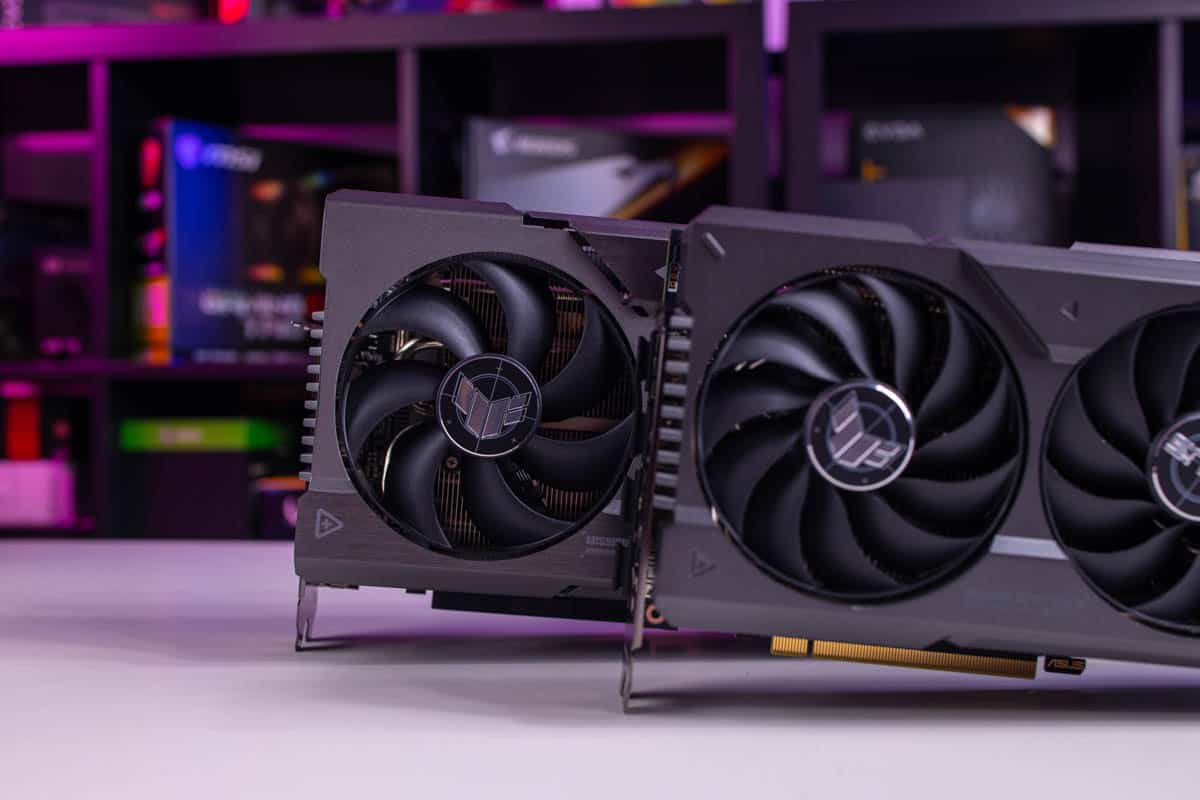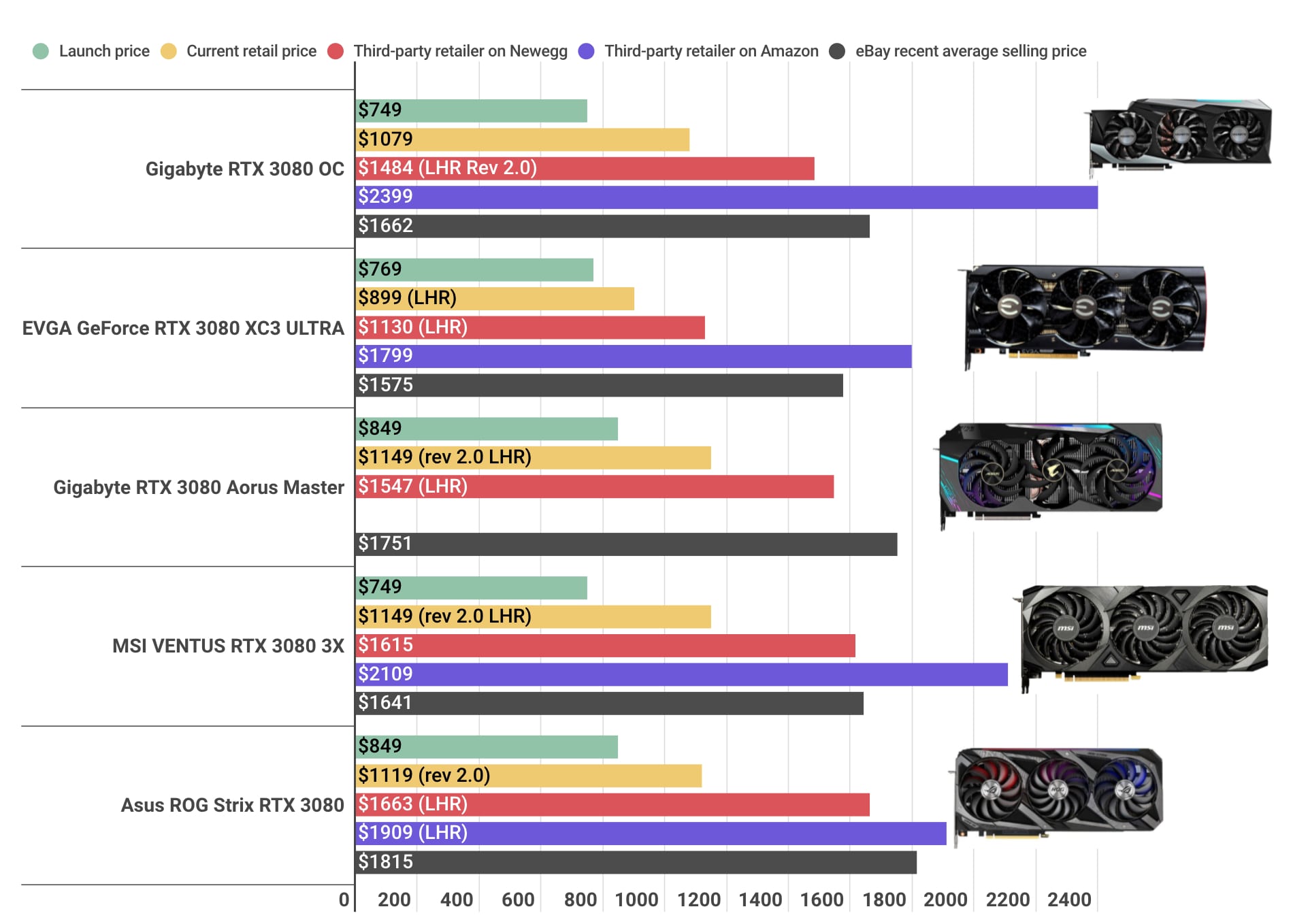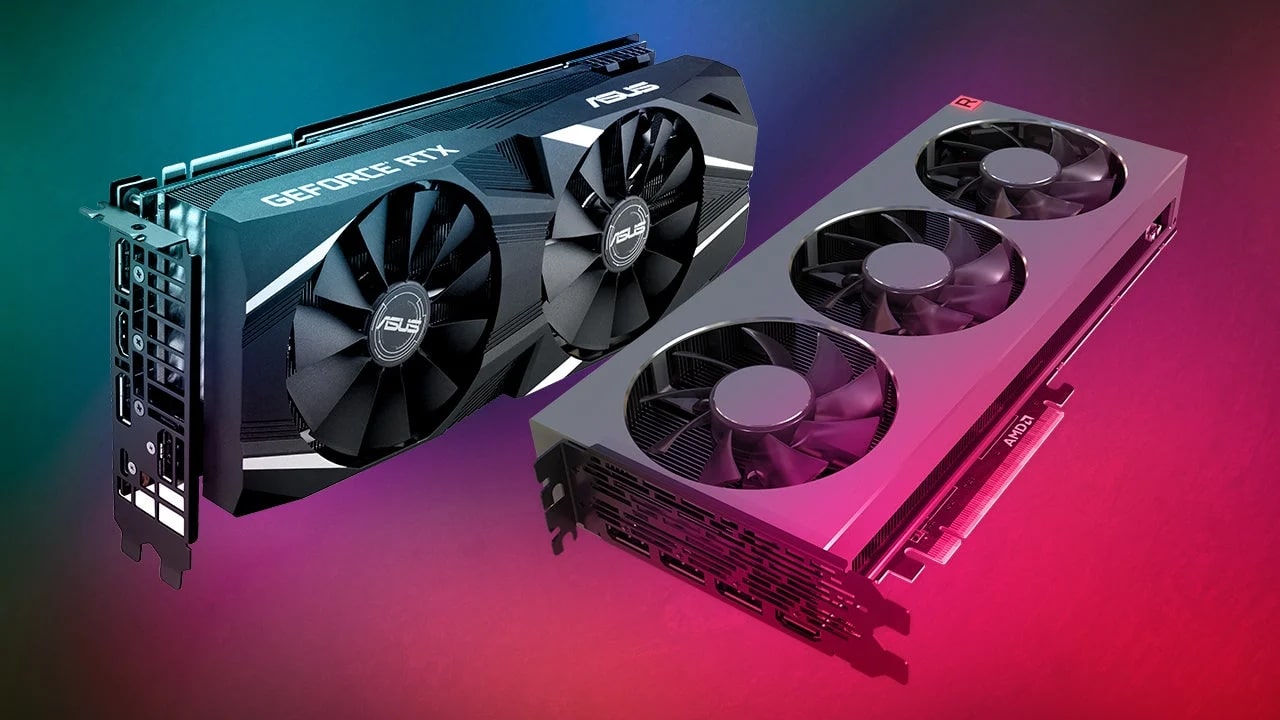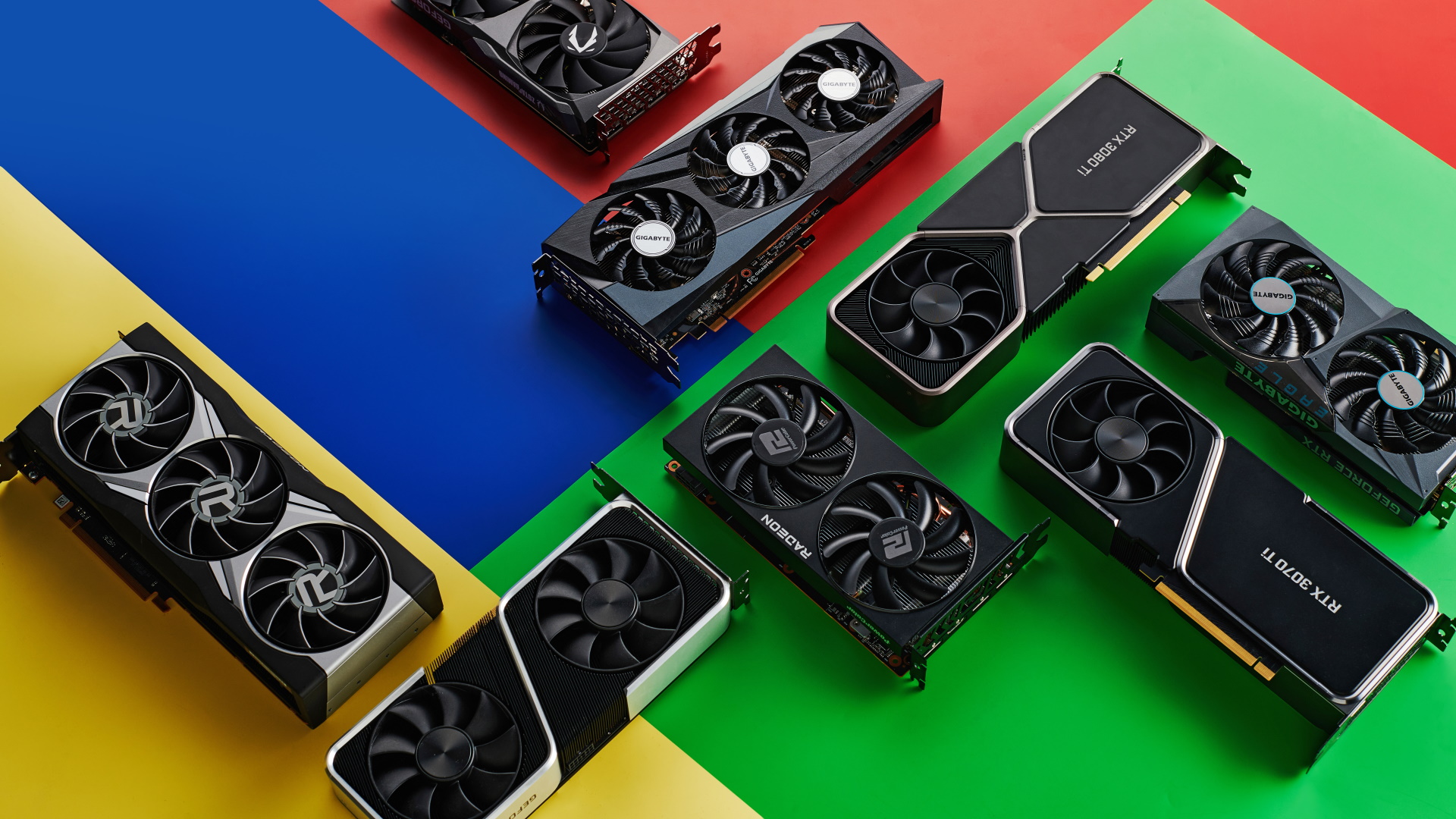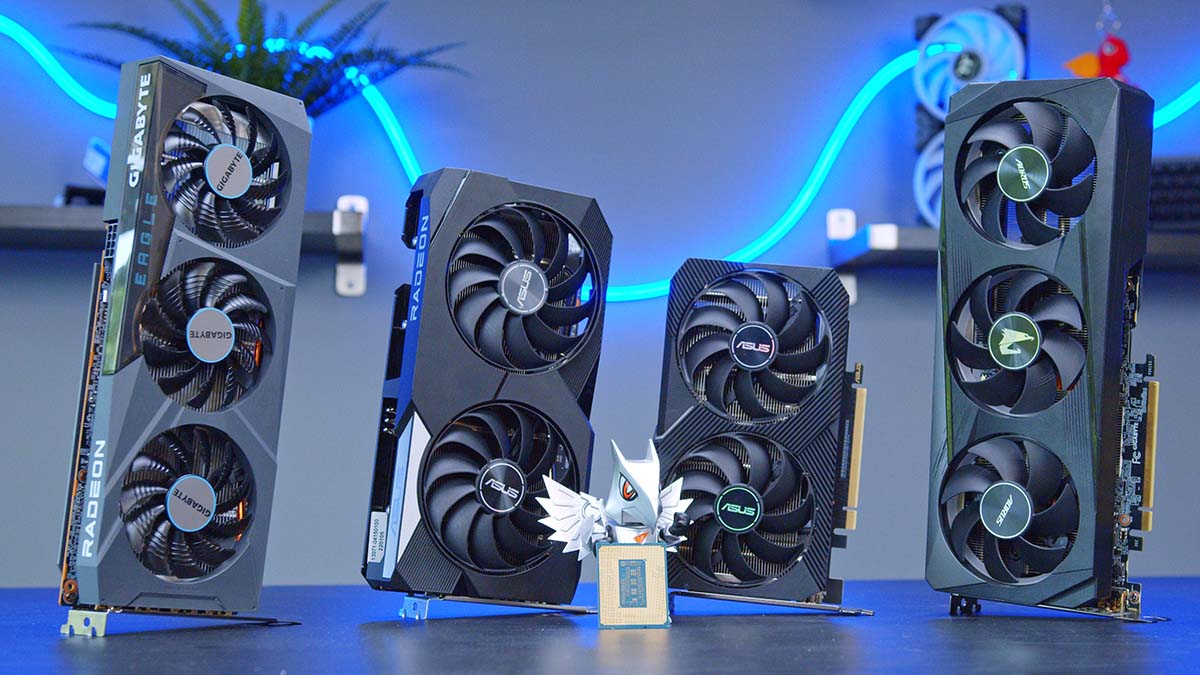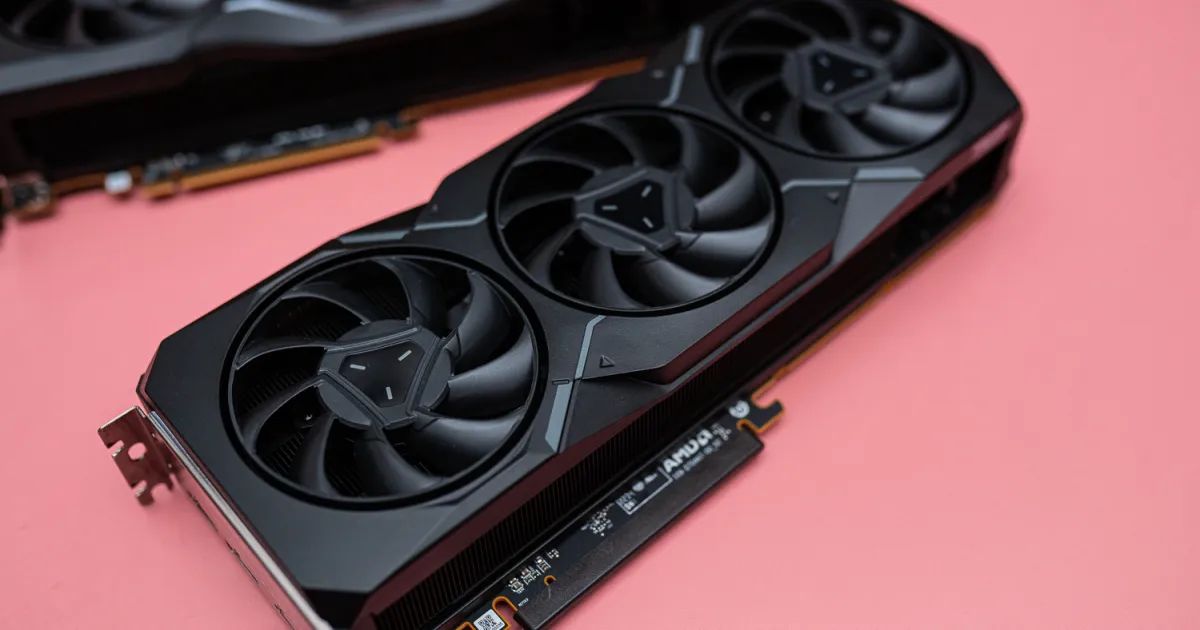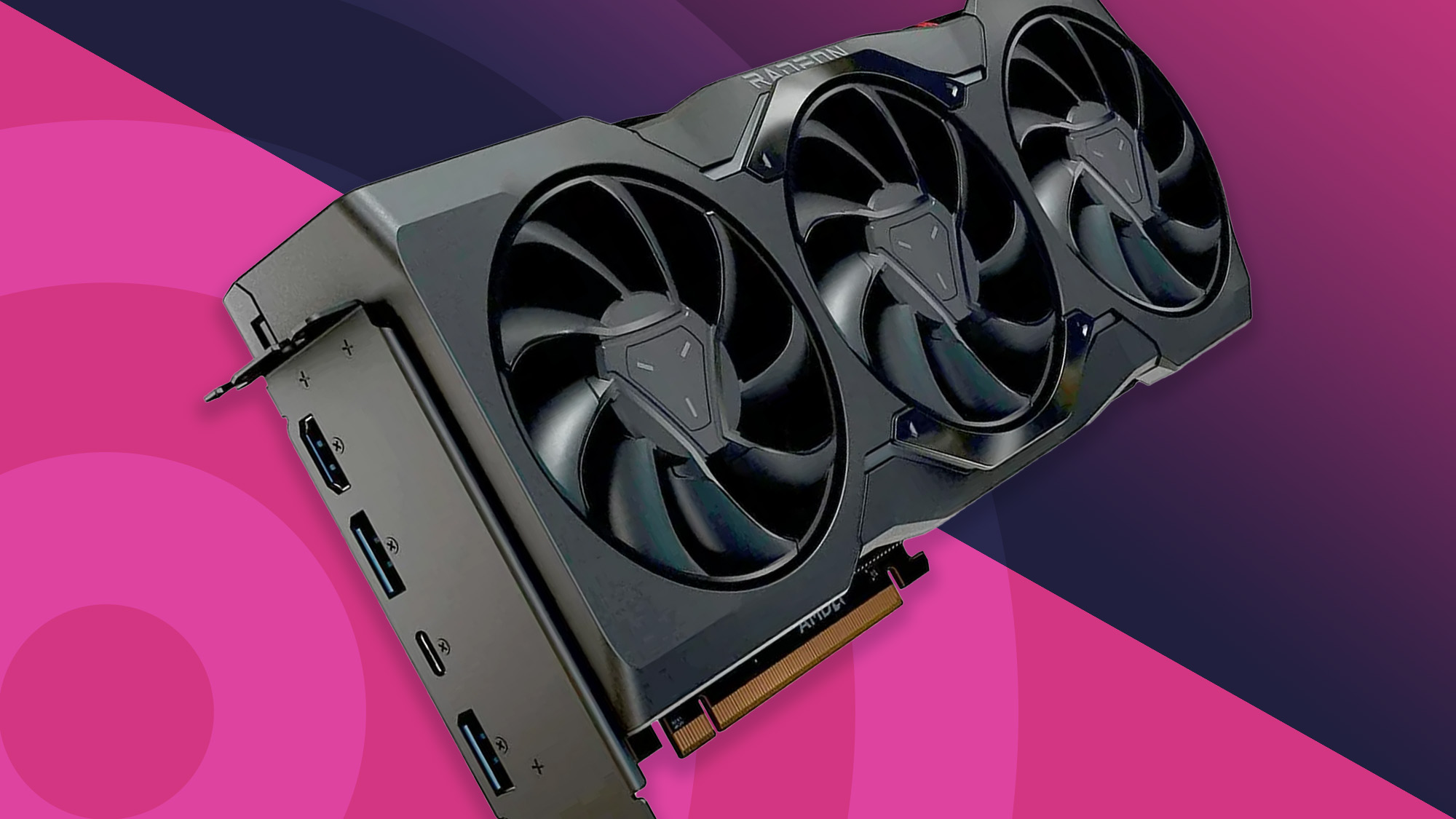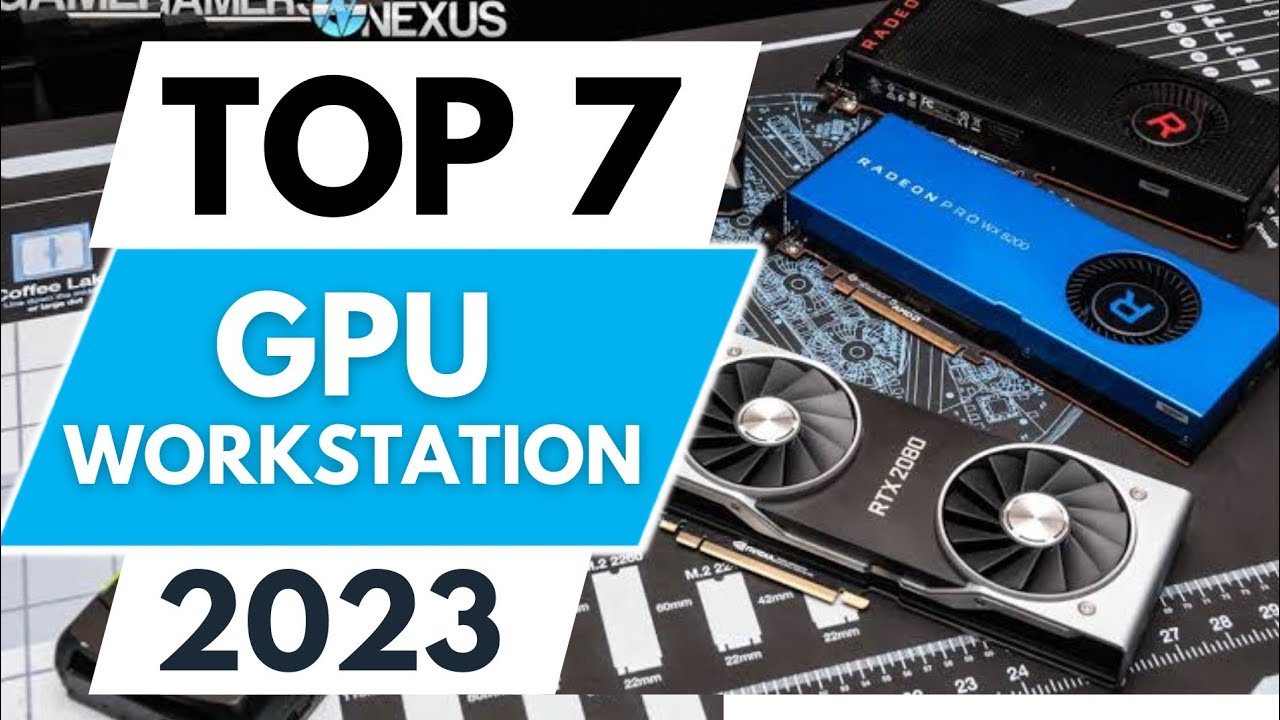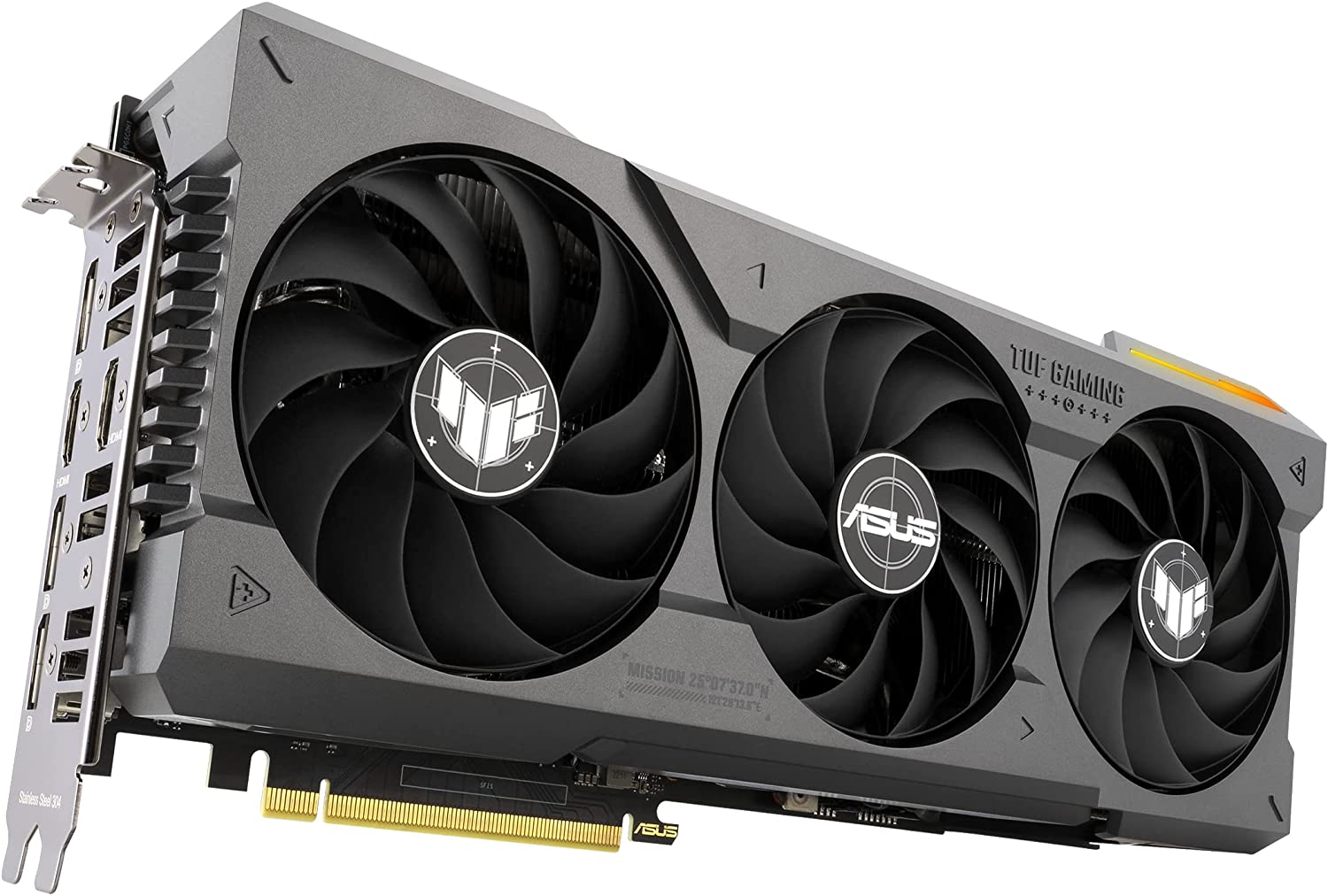Introduction
Graphics cards have become an indispensable component for modern computing devices, enabling high-quality visuals and smooth performance in various applications, including gaming, video editing, and graphic design. As technology advances and demand for enhanced graphics capabilities grows, the prices of graphics cards have become a topic of interest for many consumers. Understanding the factors that influence graphics card prices can help consumers make informed decisions when purchasing these essential devices.
Graphics card prices are influenced by several factors, including the level of performance, brand reputation, market demand, and availability. Entry-level graphics cards, designed for basic gaming and multimedia tasks, tend to have lower prices compared to their high-end counterparts. Mid-range graphics cards, which strike a balance between performance and affordability, offer good value for users seeking a balance between performance and budget. On the other hand, high-end graphics cards, often boasting the latest technologies and superior performance capabilities, come with a higher price tag.
Understanding price trends in the graphics card market is crucial for consumers looking to make a purchase. The prices of graphics cards can fluctuate widely due to factors such as supply chain disruptions, changes in manufacturing costs, and shifts in market demand. Keeping an eye on these trends can help consumers determine the best time to buy a graphics card and potentially save money.
When considering purchasing a graphics card, there are certain factors that consumers should take into account. These factors include the compatibility of the graphics card with their system, the power requirements of the card, the specific requirements of the applications they plan to use, and the long-term value and lifespan of the graphics card. Additionally, budget considerations are crucial in determining the appropriate graphics card to purchase.
In this article, we will explore the various factors that affect graphics card prices, delve into the prices of entry-level, mid-range, and high-end graphics cards, analyze price trends in the market, and discuss important factors to consider when purchasing a graphics card. By the end, readers will have a comprehensive understanding of graphics card prices and be empowered to make informed decisions when buying a graphics card.
Factors Affecting Graphics Card Prices
Several key factors influence the prices of graphics cards, shaping the range of options available to consumers. Understanding these factors is essential for buyers looking to make an informed decision when purchasing a graphics card.
1. Performance Level: The performance level of a graphics card is one of the primary determinants of its price. Graphics cards are designed to handle different levels of graphical tasks, ranging from basic multimedia usage to high-end gaming and professional applications. More advanced graphics cards with higher performance capabilities typically come with a higher price tag.
2. Brand Reputation: Brand reputation plays a significant role in graphics card pricing. Well-established brands with a strong track record and a loyal customer base often command higher prices for their products. Consumers may be willing to pay a premium for a trusted brand known for reliability, quality, and customer support.
3. Market Demand: Graphics card prices are also influenced by market demand. If a particular graphics card model is in high demand but limited supply, prices are likely to increase. Conversely, if there is low demand for a specific model, prices may be lower to attract buyers.
4. Availability: The availability of graphics cards can impact their prices significantly. Scarcity due to manufacturing constraints, supply chain disruptions, or high demand can drive up prices. Conversely, when there is an oversupply of a particular model, prices may decrease as retailers aim to clear inventory.
5. Technology Advancements: Graphics card prices can also be influenced by technological advancements. As new technologies are introduced, such as improved GPU architectures or higher memory capacities, the latest graphics card models tend to command higher prices due to their enhanced performance capabilities.
6. Cryptocurrency Mining: The popularity of cryptocurrency mining can have a considerable impact on graphics card prices. Certain graphics card models are highly sought after by cryptocurrency miners due to their computational power. This increased demand from miners can lead to supply shortages and inflated prices for these specific models.
7. Competition and Pricing Strategies: The competitive landscape among graphics card manufacturers can also affect pricing. Manufacturers may adjust their prices to gain a competitive edge in the market or to align with the pricing strategies of their competitors. This competition can sometimes result in more affordable graphics card options for consumers.
By considering these factors, consumers can better understand the pricing dynamics in the graphics card market and make informed decisions that align with their needs and budgets.
Entry-Level Graphics Card Prices
Entry-level graphics cards are designed to provide basic graphical capabilities for tasks such as light gaming, web browsing, and multimedia consumption. These cards offer an affordable option for users who do not require high-performance graphics but still want a smooth and visually appealing experience. The prices of entry-level graphics cards can typically range from $100 to $300, depending on various factors.
One of the main factors that influence the pricing of entry-level graphics cards is the level of performance they offer. Generally, entry-level graphics cards have lower specifications in terms of GPU power, memory capacity, and clock speeds compared to mid-range and high-end cards. This lower performance level translates to lower prices.
Brand reputation also plays a role in the pricing of entry-level graphics cards. Well-known brands with a strong presence in the market tend to command higher prices for their entry-level offerings due to their established reputation for quality and reliability. However, there are also budget-friendly options available from less prominent brands that offer decent performance at a lower price point.
Market demand and availability can also impact entry-level graphics card prices. As entry-level cards cater to a broader consumer base, their demand tends to be higher. If there is limited availability or a surge in demand, prices may increase. Conversely, when there is an oversupply of entry-level cards, prices may become more competitive as retailers aim to attract buyers.
Another factor to consider is the technological advancements in entry-level graphics cards. As new generations of graphics cards are released with improved performance and features, older models often see price reductions. This can make older entry-level graphics cards more affordable for budget-conscious buyers.
It is worth noting that the specific pricing of entry-level graphics cards can vary based on regional factors, including taxes and import duties. Buyers should also consider the price-to-performance ratio when evaluating entry-level graphics card options, as some models may offer better value than others based on performance benchmarks and user reviews.
Overall, entry-level graphics cards provide an accessible and affordable option for casual gamers and those with basic graphical needs. By comparing prices, considering performance requirements, and researching user reviews, buyers can find entry-level graphics cards that strike the right balance between performance and budget.
Mid-Range Graphics Card Prices
Mid-range graphics cards offer a balance between performance and affordability, making them a popular choice for gamers and creative professionals who require a higher level of graphical capabilities. The prices of mid-range graphics cards typically range from $300 to $600, depending on various factors.
The performance level of mid-range graphics cards plays a significant role in determining their prices. Compared to entry-level cards, mid-range cards often feature more powerful GPUs, higher memory capacities, and faster clock speeds, allowing for better visual fidelity and smoother gameplay. This increased performance comes at a higher cost, resulting in higher prices for mid-range cards.
Brand reputation also plays a part in pricing mid-range graphics cards. Well-established brands with a strong reputation for quality and customer support may charge a premium for their mid-range offerings. However, there are also competitively priced options available from lesser-known brands that offer comparable performance.
Market demand and availability are other factors that can impact the prices of mid-range graphics cards. As mid-range cards cater to a specific segment of the market, their demand tends to be more targeted. If the demand for a particular mid-range graphics card is high or if the supply is limited, prices may increase accordingly. On the other hand, if there is excess supply or lower demand for a specific model, prices may become more competitive.
Technological advancements also influence mid-range graphics card prices. When new generations of graphics cards are released with improved performance and features, older mid-range models may see price reductions. This can make previously high-end mid-range options more affordable for consumers on a budget.
It is important for buyers to consider the specific requirements of their intended use when evaluating mid-range graphics card options. Different applications and games have varying demands on graphical performance, and buyers should choose a mid-range card that meets their specific needs without overspending on unnecessary features.
Comparing prices, reading user reviews, and understanding the performance benchmarks of different mid-range cards can help buyers make an informed decision. Additionally, buyers should factor in long-term value and future-proofing, considering how well a mid-range card may perform with upcoming software advancements and game releases.
Overall, mid-range graphics cards strike a balance between performance and affordability, making them an attractive option for gamers and creative professionals. By considering factors such as performance requirements, brand reputation, market demand, and technology advancements, buyers can find the mid-range graphics card that best meets their needs and budget.
High-End Graphics Card Prices
High-end graphics cards are designed for users who demand top-tier performance and are willing to invest in the latest and most powerful hardware. These cards excel in handling demanding tasks such as high-resolution gaming, professional video editing, and 3D rendering. The prices of high-end graphics cards typically range from $600 to $1500 or more, depending on various factors.
The primary factor driving the prices of high-end graphics cards is their unmatched performance capabilities. High-end cards are equipped with state-of-the-art GPUs, large memory capacities, and advanced features that deliver exceptional visual fidelity and computing power. This level of performance comes at a premium cost, resulting in higher prices compared to entry-level and mid-range cards.
Brand reputation plays a significant role in the pricing of high-end graphics cards. Well-established brands with a history of producing reliable and high-quality products may charge higher prices for their high-end offerings. Consumers often associate these brands with superior performance, exceptional support, and advanced features, which justifies the higher price tag.
Market demand and availability also impact the prices of high-end graphics cards. As these cards cater to a niche market of high-performance enthusiasts and professionals, their demand tends to be more specific. If there is a high demand for a particular high-end model or a limited supply available, prices may increase due to the scarcity. Conversely, if there is oversupply or lower demand for a specific model, prices may become more competitive.
Technological advancements contribute to the pricing of high-end graphics cards as well. The latest high-end cards often feature cutting-edge GPU architectures, advanced cooling mechanisms, and innovative features that enhance performance and efficiency. The incorporation of these technologies drives up the costs of production and, consequently, the prices of high-end graphics cards.
When considering purchasing a high-end graphics card, buyers should carefully evaluate their specific needs and requirements. High-end cards are often overkill for typical gaming and multimedia tasks, so buyers should ensure that they have a genuine need for the top-tier performance offered by these cards. It is also essential to consider future-proofing and the longevity of the investment, as high-end cards tend to remain powerful and relevant for a longer period.
Buyers should compare prices across various retailers and consider factors such as warranty, customer support, and bundled software when evaluating different high-end graphics card options. Additionally, reading user reviews and consulting expert opinions can provide valuable insights into the performance and reliability of specific high-end models.
In summary, high-end graphics cards offer unparalleled performance but come at a higher price compared to entry-level and mid-range options. By considering factors such as performance requirements, brand reputation, market demand, and technology advancements, buyers can make an informed decision when investing in a high-end graphics card that meets their specific needs.
Graphics Card Price Trends
The prices of graphics cards can vary over time due to various market factors and trends. Being aware of these trends can help consumers make informed decisions and potentially save money on their graphics card purchases.
One significant trend in graphics card prices is the impact of supply and demand dynamics. When there is high demand for a particular graphics card model but limited supply, prices tend to increase. This can be fueled by factors such as new releases, high-profile game launches, or industry-wide shortages. On the other hand, if there is an oversupply of a specific model or lower demand, prices may become more competitive as retailers aim to clear their inventory.
Technological advancements also influence graphics card prices. The release of new generations of graphics cards often leads to price adjustments. When a new generation with improved performance and features is introduced, older models may see price reductions as retailers and manufacturers make room for the latest releases. Buyers who are not concerned with having the absolute latest technology can take advantage of these price drops to get good value for their money.
Market competition among graphics card manufacturers can also impact prices. Manufacturers may adjust their pricing strategies to gain a competitive edge or align with the pricing of their rivals. This competition can result in lower prices or added value in terms of bundled software or extended warranties, benefiting consumers who are comparison shopping for the best graphics card deal.
External factors and events can also influence graphics card prices. For example, disruptions in the supply chain or changes in manufacturing costs can impact the overall pricing of graphics cards. Economic fluctuations, such as changes in currency exchange rates or inflation, may affect import costs and subsequently impact the retail prices of graphics cards. It is important for buyers to stay informed about such external factors that can impact prices and adjust their purchasing decisions accordingly.
Long-term price trends in the graphics card market indicate that prices tend to decrease over time as technology becomes more accessible and production costs decrease. This means that if buyers can afford to wait, they may be able to secure their desired graphics card at a lower price. However, it is important to strike a balance between waiting for price drops and fulfilling immediate needs.
To make the most of graphics card price trends, buyers should conduct research, compare prices across different retailers, and be patient to take advantage of favorable market conditions. Regularly checking online marketplaces, monitoring technology news, and following discussions in forums and communities can provide valuable insights into graphics card price trends and help buyers make informed purchasing decisions.
Factors to Consider When Buying a Graphics Card
When it comes to buying a graphics card, there are several factors that buyers should carefully consider to ensure they choose the right card for their needs and budget. By taking these factors into account, buyers can make an informed decision and maximize their investment in a graphics card.
1. Compatibility: Buyers should ensure that the graphics card they are considering is compatible with their system. This includes checking compatibility with the motherboard, power supply, and available PCIe slots. It’s important to consult the specifications and requirements of both the graphics card and the computer system before making a purchase.
2. Performance Requirements: Buyers should assess their performance needs based on the intended use of the graphics card. For gamers, this may include considerations such as desired resolution, frame rates, and settings for the games they plan to play. Creative professionals, on the other hand, may require higher graphics processing power for tasks such as video editing, 3D rendering, or graphic design. Evaluating performance benchmarks and reviews can help in determining which graphics card meets these performance requirements.
3. Power Requirements: Graphics cards have varying power requirements, and buyers should ensure that their power supply can handle the power demands of the card they plan to purchase. It is crucial to check the recommended power supply wattage and the availability of necessary power connectors (such as PCIe power connectors) to prevent compatibility and performance issues.
4. Application Compatibility: Buyers should consider the specific applications or software they plan to use with the graphics card. Different applications have varying requirements and may benefit from specific features or optimizations provided by certain graphics card models. Checking for compatibility and researching any specific requirements for the intended applications can help buyers choose the most suitable graphics card.
5. Budget: Budget is an important consideration for any purchase, including graphics cards. Buyers should establish a budget range and determine the maximum amount they are willing to spend. It is crucial to strike a balance between performance capabilities and budget limitations to avoid overspending on unnecessary features or underspending and compromising on performance.
6. Long-Term Value: Buyers should consider the long-term value and lifespan of the graphics card they are considering. Graphics card technology evolves rapidly, and choosing a card that can withstand future software advancements and game releases can ensure a longer useful life. Consider researching the card’s architecture, memory capacity, and compatibility with future technologies to help gauge its long-term value.
7. Manufacturer Reputation and Support: Buyers should consider the reputation and support offered by the manufacturer of the graphics card. Well-established brands with a history of producing reliable products and providing customer support can offer added peace of mind and assistance if any issues arise with the graphics card.
By carefully evaluating these factors, buyers can make an informed decision when purchasing a graphics card that aligns with their system requirements, performance needs, and budget. Taking the time to research and compare options can ensure a satisfying and cost-effective graphics card purchase.
Conclusion
Choosing the right graphics card is a crucial decision for gamers, creative professionals, and anyone seeking enhanced visual performance. By considering factors such as performance requirements, compatibility, power needs, and budget limitations, buyers can make an informed decision and maximize their investment in a graphics card that meets their needs.
Understanding the factors that influence graphics card prices, including performance level, brand reputation, market demand, and availability, can help buyers navigate the market and find the best value for their money. Additionally, tracking price trends and being aware of technological advancements can provide opportunities to seize favorable deals or take advantage of price reductions.
Mid-range graphics cards offer a balance between performance and affordability, making them an attractive choice for many users. Entry-level cards provide an accessible option for basic graphical needs, while high-end cards cater to those seeking top-tier performance capabilities at a premium price.
Considering factors such as application compatibility, long-term value, and the reputation of the manufacturer can guide buyers in making a well-rounded decision. Buyers should also stay informed about advancements in graphics card technology to future-proof their investment and ensure compatibility with upcoming software releases.
Ultimately, the purchase of a graphics card is a personal decision that depends on individual requirements, preferences, and budget. Conducting thorough research, comparing prices, and reading user reviews are essential steps in finding the best graphics card for one’s needs.
By taking into account all these factors and making an informed decision, buyers can enjoy enhanced visuals, smoother performance, and an overall better computing experience with their chosen graphics card.







